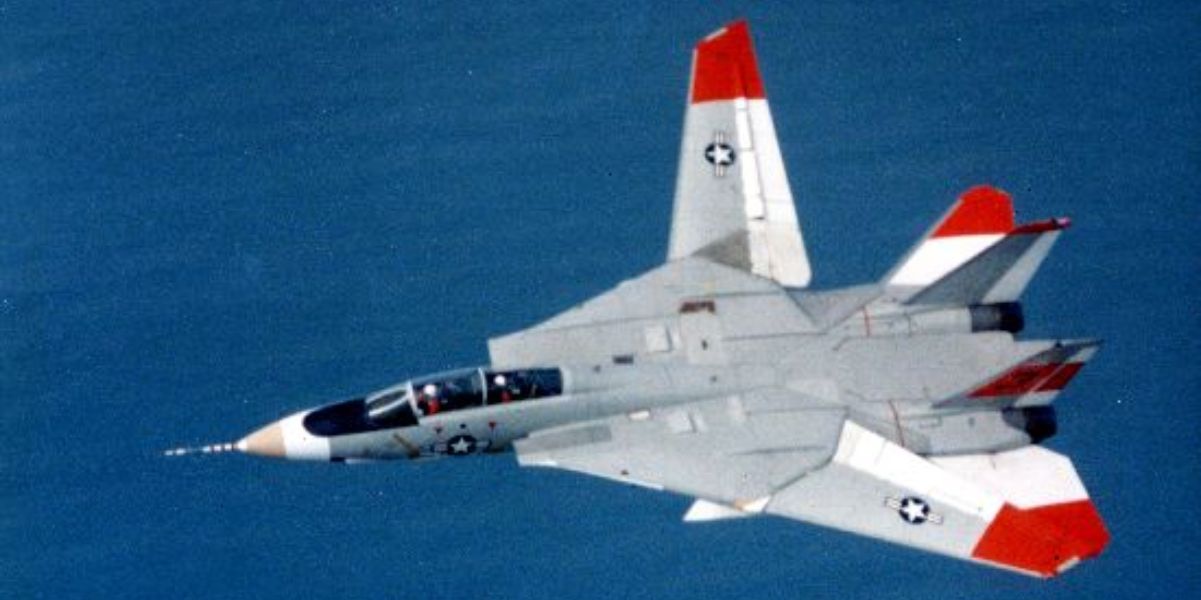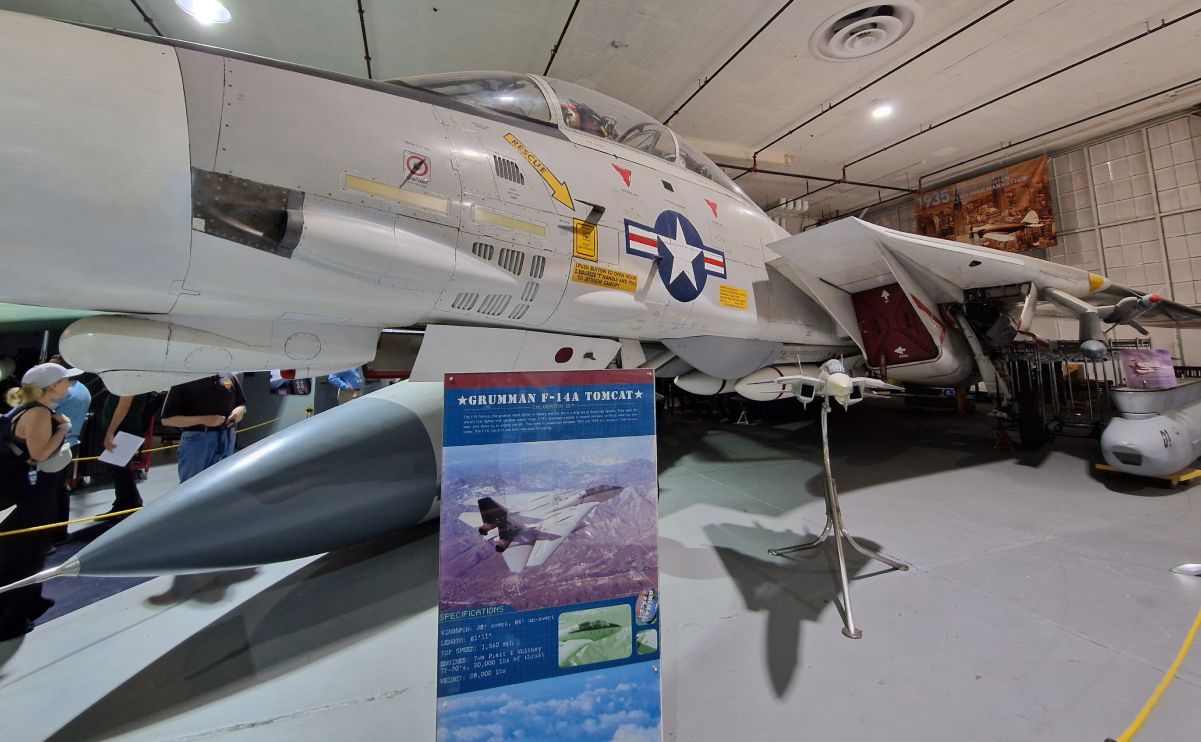The F-14 Tomcat
When it came to Cold War fighters from the Free World, none could match the Grumman F-14 Tomcat of the US Navy. Six long-range AIM-54A Phoenix missiles could be guided by the F-14’s AWG-9 weapons control system against six different threat aircraft at a long distance. For medium-range combat, Sparrow missiles were carried; Sidewinders and a 20mm were available for dogfighting. In the latter role, the Tomcat’s variable-sweep wings gave the F-14 a combat maneuvering capability that could not have been achieved with a “standard” fixed planform wing.
The F-14A, which employed the P&W TF30 engines and AWG-9 system and carried the six Phoenix missiles designated for the F-111B, was created in 1968 to replace the controversial F-111B, which was being developed for the Navy’s carrier fighter inventory. A completely new fighter system was designed around these that placed a strong focus on standoff missile fighting and close-in fighting “claws.” After undergoing five years of development, evaluation, squadron training, and initial carrier deployments following its first flight on December 21, 1970, the F-14A has become the most potent fighter aircraft for carrier air wings. Technical and financial problems that received a great deal of publicity have been overcome in achieving this goal.

F-14A No. 3
F-14A [Aircraft No. 3, Bureau Number (BuNo.) 157982], the third Tomcat manufactured and one of the prototypes utilized in the initial testing of the aircraft, can be seen on exhibit at the Cradle of Aviation Museum at Mitchel Field, Long Island. There are several reasons why this particular Tomcat is significant. Firstly, it is the oldest surviving F-14 in the world.

No. 3 first flew on Dec. 28, 1971, with Grumman Test Pilots Don Evans (pilot) and Dennis Romano (Weapon Systems Officer). As told by David F. Brown in his book Tomcat Alley: A Photographic Roll Call of the Grumman F-14 Tomcat, she was then delivered on Jan. 4, 1972.
The second interesting thing about BuNo. 157982 is that while operating out of the Grumman Flight Test Facility at Calverton, New York, No 3 was primarily used for determining the entire structural envelope for the F-14 and investigating certain flight characteristics under extreme conditions.

One of these was in response to concerns raised by the US Navy regarding asymmetrical wing sweep. The asymmetrical wing sweep program came as a result of an incident in the fleet where the wings on one Tomcat in flight experienced a slight misalignment with the degree setting for each wing.
This resulted in concern by the Navy that if this problem persisted could the F-14 safely land as well as take off. No. 3 is best remembered for the photo shown above (The presence of a star and bar on both wings led some to believe that this was a cleverly faked piece of photographic trickery, but in fact, the photo really does show Tomcat 3 with her wings swept differentially, with the starboard wing locked fully forward, and the port wing swept fully aft).
Flight tests

As explained by William Barto, F-14 NATOPS illustrator, Historian, and on the Board of Directors of the F-14 Tomcat Association and museum associate, Cradle of Aviation Museum, in an article for the F-14 Tomcat Association, a series of flight tests were conducted from December 19, 1985 to February 28, 1986. Chuck Sewell, the Chief Test Pilot of Grumman, carried out multiple trials wherein the left wing was positioned at 35, 50, 60, and 68 degrees of sweep while the right wing was locked in the forward position at 20 degrees. It was determined that the maximum landing angle was 60 degrees. Sewell found that the aircraft could be used for carrier landings in this configuration in the case of an operational in-flight malfunction.
The famous photo of an asymmetrical wing sweep with the right wing at 20 degrees and the left wing at 60, proved in an extreme way that the jet could still perform.

Tomcat No. 3 flew for the last time in 1990, and she was stricken on Sep. 20, 1994. Acquired by the Cradle of Aviation Museum in 1995, No. 3 is shown here on display in Hangar 2. It is also interesting to note that Tom Gwynne, Vice President for External Relations for the “Cradle”, and Grumman Test Pilot No. 72, flew No. 3 on several occasions.
Photo by Grumman and William Barto

